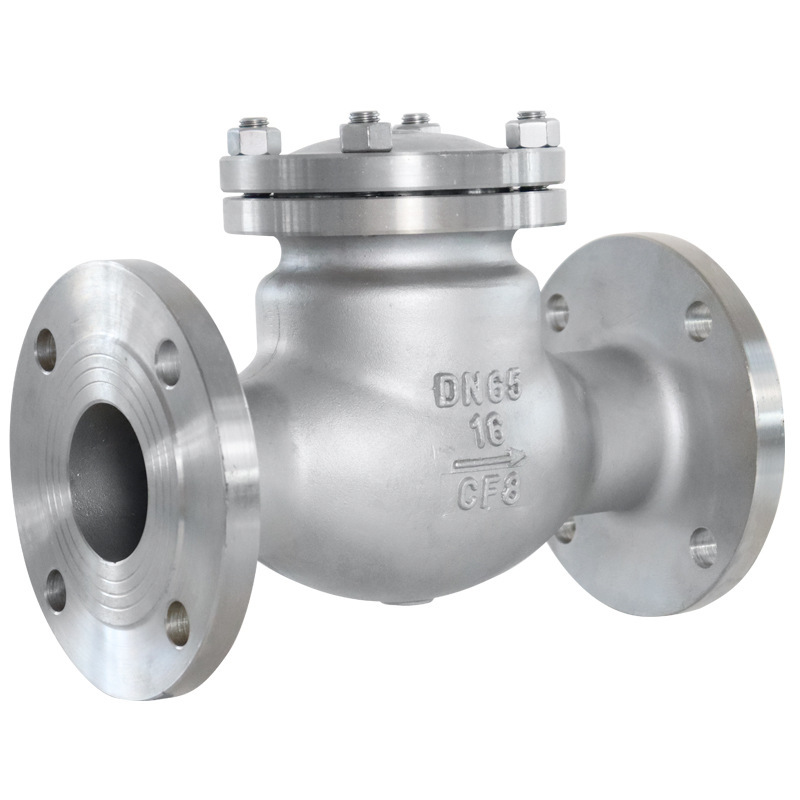يمكن أن تنجم أعطال صمامات الفحص عن طرق التركيب غير الصحيحة، وممارسات الصيانة غير الكافية، وعدم كفاية البحث قبل التطبيق.
تعيق مثل هذه الأعطال الأداء السليم للصمام وقد تؤدي إلى تلف أنظمة الأنابيب والمضخات ومعدات الآبار.
تعمل صمامات الفحص، المعروفة أيضًا باسم صمامات عدم الرجوع، على تسهيل تدفق السوائل في اتجاه واحد، مما يمنع التدفق العكسي (التدفق العكسي) في النظام المطبق.
وبالتالي، قد يؤدي فشل صمام الفحص في البئر إلى تدفق السائل مرة أخرى إلى البئر.
يتطلب منع فشل صمام الفحص التثبيت الصحيح، والاختبار المنتظم للكشف المبكر عن المشكلات المحتملة، والصيانة المناسبة.
تتعمق هذه المناقشة في اختبار وتركيب وتجميع صمامات الفحص، ومعالجة حالات الفشل الشائعة والأعراض والأسباب والحلول.
يعد اكتشاف أعراض صمام الفحص السيئ أمرًا بالغ الأهمية لمنع التسربات.
التثبيت غير الصحيح، والصيانة غير الكافية، ومشكلات مثل التدفق العكسي أو المكونات التالفة يمكن أن تساهم في حدوث التسريبات.
يتيح التعرف على هذه الأعراض التدخل في الوقت المناسب ويضمن التشغيل السليم لصمامات الفحص في أنظمة السوائل.
إن اختيار صمام الفحص المناسب للتطبيق واتباع إرشادات الشركة المصنعة أثناء التثبيت يمكن أن يمنع التسربات.
يعد الفحص والتنظيف المنتظم لصمامات الفحص أمرًا ضروريًا لمنع تراكم الحطام وإطالة عمر الصمام.
يمكن أن يتسبب التدفق العكسي المفرط في تآكل الصمام، مما يؤدي إلى حدوث تسربات في نهاية المطاف.
يمكن أن تؤدي درجات الحرارة المرتفعة إلى تسريع تآكل الصمام وتقليل فعالية الختم.
يمكن أن يؤدي التآكل المفرط أو التمزق أو التثبيت غير الصحيح إلى حدوث تسرب من الجذع.
يمكن أن يؤدي التثبيت غير الصحيح أو تآكل ختم المقعد إلى حدوث تسربات.
مع مرور الوقت، يمكن أن ترتخي أدوات التثبيت، مما يتسبب في حدوث تسربات حول الصمام.
يمكن أن تساهم الحشيات التي تتضرر أو تتآكل في حدوث التسربات.
يمكن للجزيئات الصلبة المحاصرة في الصمام أن تعيق التدفق وتسبب التسربات.
لمعالجة تسرب صمام الفحص، يوصى بالصيانة الدورية وإزالة الحطام والاستبدال الفوري للمكونات التالفة.
إذا استمرت المشكلات، فقد يكون من الضروري استبدال الصمام بأكمله.
يعد تحديد وإصلاح مشكلات صمام الفحص أمرًا بالغ الأهمية لتحقيق الأداء الأمثل. فيما يلي حلول للمشكلات الشائعة:
استبدل المكونات البالية مثل القرص أو المقعد أو الزنبرك أو الحشية لمنع التسربات.
تقليل التدفق العكسي لمنع تآكل الصمام.
استخدم مادة التشحيم لتقليل الاحتكاك، مما يعزز عمر خدمة الصمام.
إذا استمرت المشكلات، ففكر في استبدال الصمام بأكمله.
من الضروري الالتزام بتعليمات الشركة المصنعة للتركيب والصيانة، وضمان الأداء السليم ومنع تلف الصمام أو النظام.
تساهم عمليات الفحص والتنظيف المنتظمة أيضًا في منع التسرب والحفاظ على صحة النظام بشكل عام.
يمكن أن تؤدي مشكلات صمام الفحص الشائعة، مثل التثبيت غير الصحيح أو التآكل، إلى حدوث تسربات.
يعالج التثبيت المناسب والصيانة الدورية واستبدال المكونات هذه المشكلات.
يعد اتباع إرشادات الشركة المصنعة أمرًا بالغ الأهمية لضمان الأداء الأمثل لصمام الفحص، ومنع الضرر وإطالة عمر النظام.
